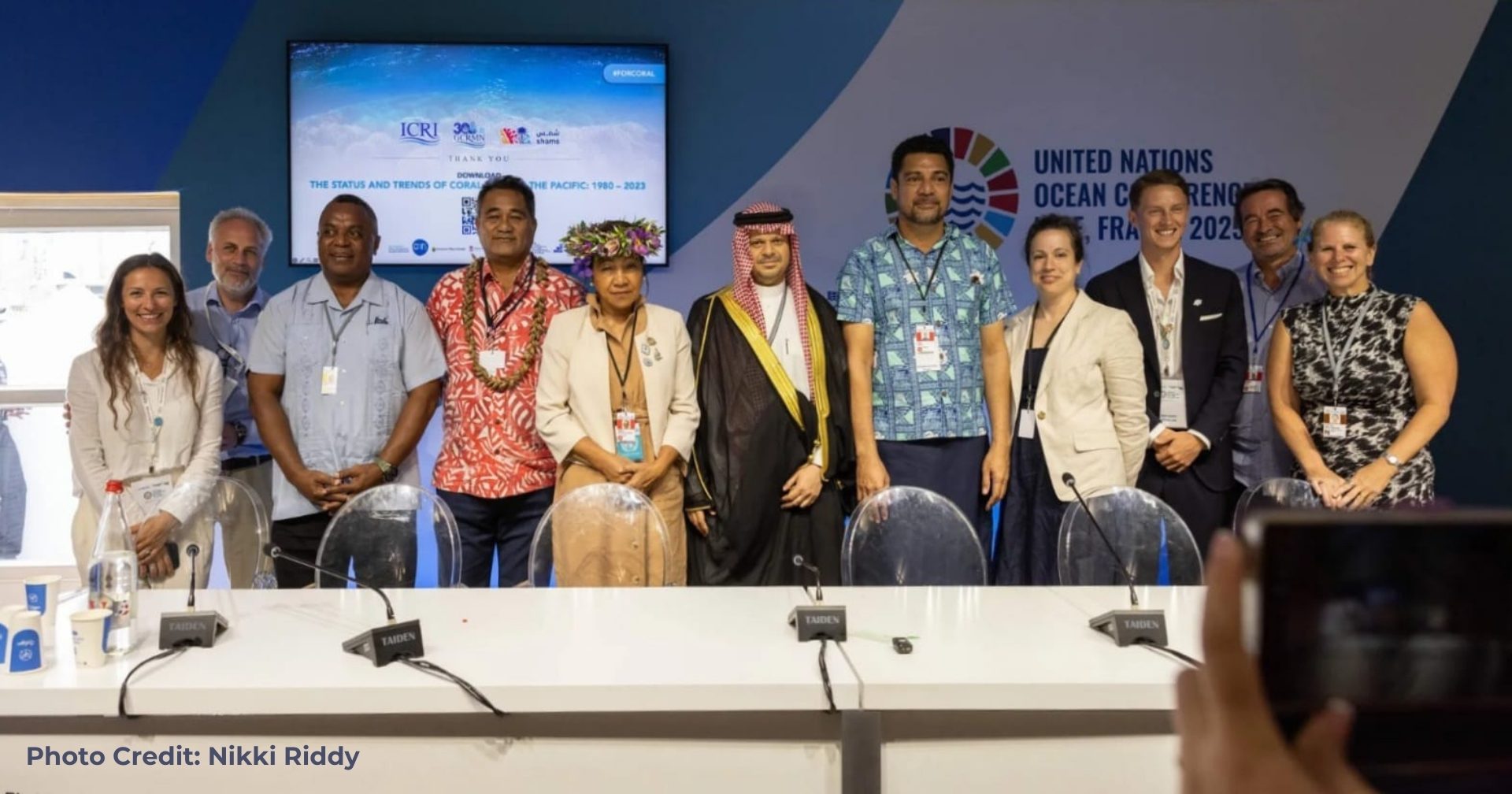Contributed by International Coral Reef Initiative (ICRI), Founding Member - MENA Oceans Network
A major new regional assessment launched on 12th June 2025 at Nice by the Global Coral Reef Monitoring Network (GCRMN), an operational network of the International Coral Reef Initiative (ICRI), calls for urgent and unified action to protect the future of coral reefs in the Pacific. Released at the Third United Nations Ocean Conference, the Status and Trends of Coral Reefs of the Pacific: 1980–2023 is the most comprehensive report produced on the region’s reefs to date.
The Pacific harbours over 26% of the world’s coral reefs, spanning 65,255 km² across 30 countries and territories. These ecosystems are far more than biodiversity hotspots: they are the lifeblood of Pacific societies — sustaining fisheries, protecting coastlines, and anchoring cultural identity. In many Pacific communities, coral reefs are not just ecosystems but kin, ancestors, and sacred spaces. Their survival is inseparable from the survival of Pacific ways of life.
Drawing on more than 15,000 surveys from over 8,000 sites between 1987 and 2023, the GCRMN report delivers a nuanced picture: one of resilience in the face of mounting pressure, but also one that signals urgent intervention is needed.
While many reef systems globally have experienced dramatic declines, the Pacific’s average hard coral cover remained relatively stable at 25.5% from 1990 to 2022. This resilience is remarkable and offers hope — attributed to the region’s vast geography, high ecological diversity, and relatively low human population.
Yet this seeming resilience is underlined by a changing system:
- Coral cover declined during major bleaching events — by 2.4% in 1998 and 3.7% in 2014–2017 — with recovery taking up to six years.
- The composition of coral communities is shifting away from complex branching species to more massive forms, reducing the complex three-dimensional habitat that supports biodiversity.
- Macroalgae, which compete with corals, has increased by 2.7% across the region, yet coralline algae – vital for new corals to settle – showed modest gains.
- Sea surface temperatures over coral reef areas rose by +0.82°C between 1985 and 2022, contributing to the projected increase in frequency, intensity, and duration of marine heatwaves (leading to bleaching events). e.
- From 1980 to 2023, 945 cyclones passed within 100 km of reefs, and these are expected to become more intense with climate change.
- Human populations near reefs have grown by 28.7% since 2000, increasing local pressures such as pollution and overfishing.
Critically, these findings predate the ongoing Fourth Global Coral Bleaching Event — the most widespread and intense ever recorded — which has affected 84% of the world’s coral areas and is still ongoing. The report is clear: if 2023–2024 data were included, we would likely have observed a decline in coral cover in the Pacific. Even though conservation actions in the Pacific have likely aided coral cover to remain relatively stable until 2022, without bold and transformative international progress to curb climate change, the reefs of the Pacific face an uncertain future as more intense and frequent bleaching events become the norm.
The International Coral Reef Initiative has set out clear actions for coral reefs in its Eight Key Policy Asks, from improving water quality, supporting sustainable reef fisheries, and centring Indigenous knowledge in reef governance, to scaling finance and addressing the Triple-Planetary Crisis. Pacific nations are already pioneering many of these approaches — but require greater international financial support to scale them.
Read the full GCRMN Pacific coral reefs report
For further information, interviews, or images, please contact
Dr Serge Planes, Dr Jérémy Wicquart, and/or Tom Dallison.
The Global Coral Reef Monitoring Network (GCRMN):
The Global Coral Reef Monitoring Network (GCRMN) is the primary operational monitoring network of the International Coral Reef Initiative (ICRI). Established in 1995, GCRMN provides scientifically robust, long-term data on the status and trends of the world’s coral reefs to inform policy, strengthen management, and support conservation. Hosted by the Australian Institute of Marine Science (AIMS), the GCRMN operates through 10 regional nodes, collaborating with national governments, regional organisations, scientists, and local communities. The network plays a central role in tracking progress towards global biodiversity and sustainable development targets by promoting standardised monitoring, building technical capacity, and ensuring that coral reef data are accessible, inclusive, and policy-relevant.
To date, the GCRMN has produced 6 global reports, and numerous regional and thematic reports, with the most recent global assessment released in 2021 – the Status of Coral Reefs of the World: 2020.

